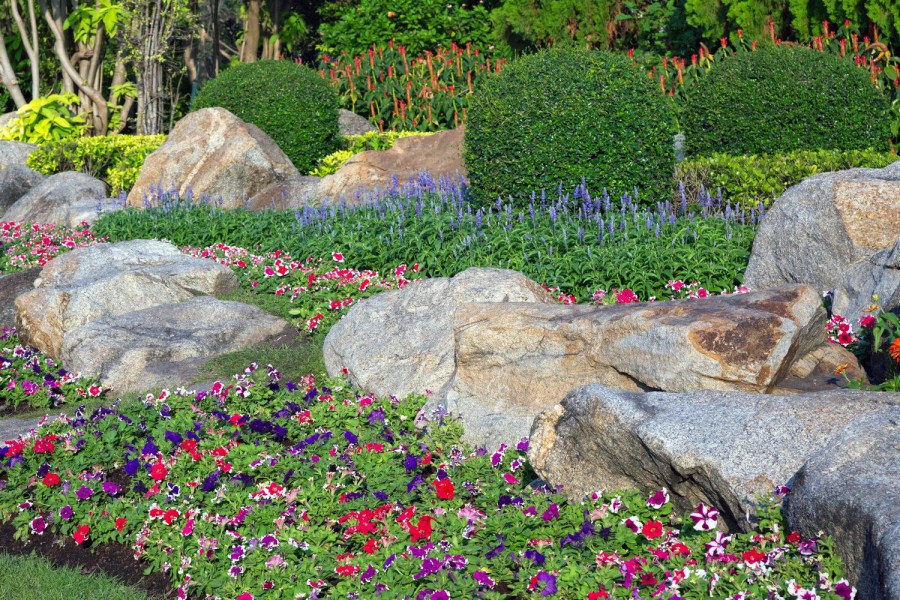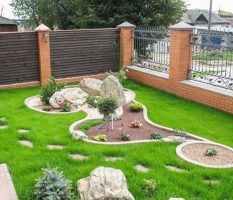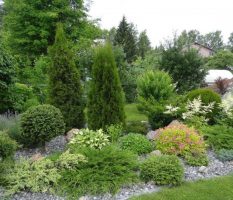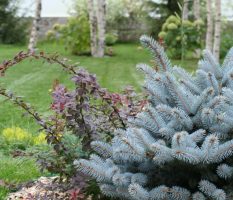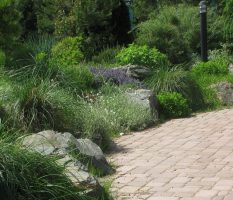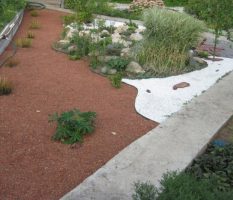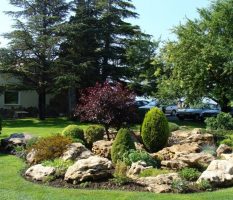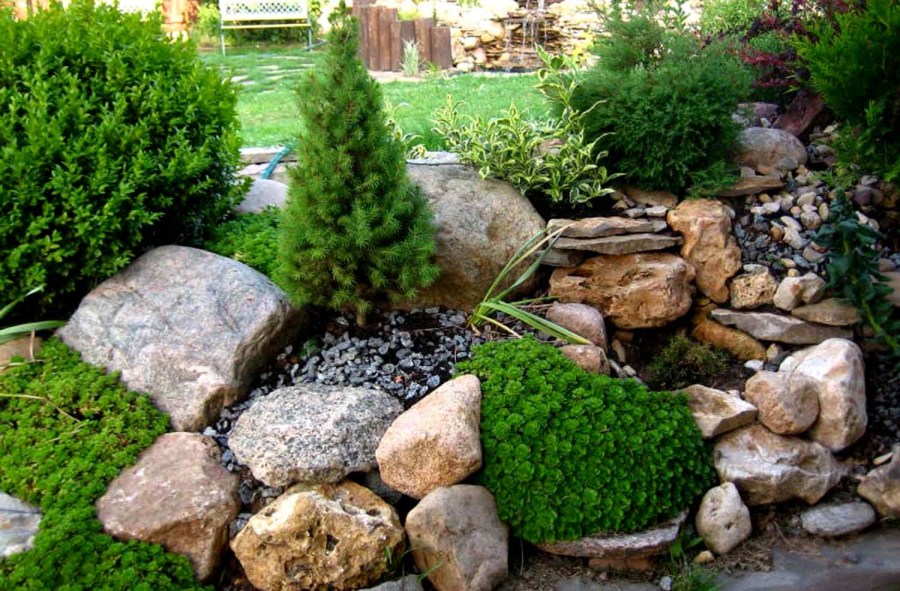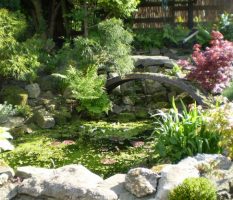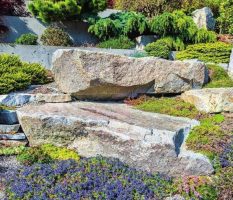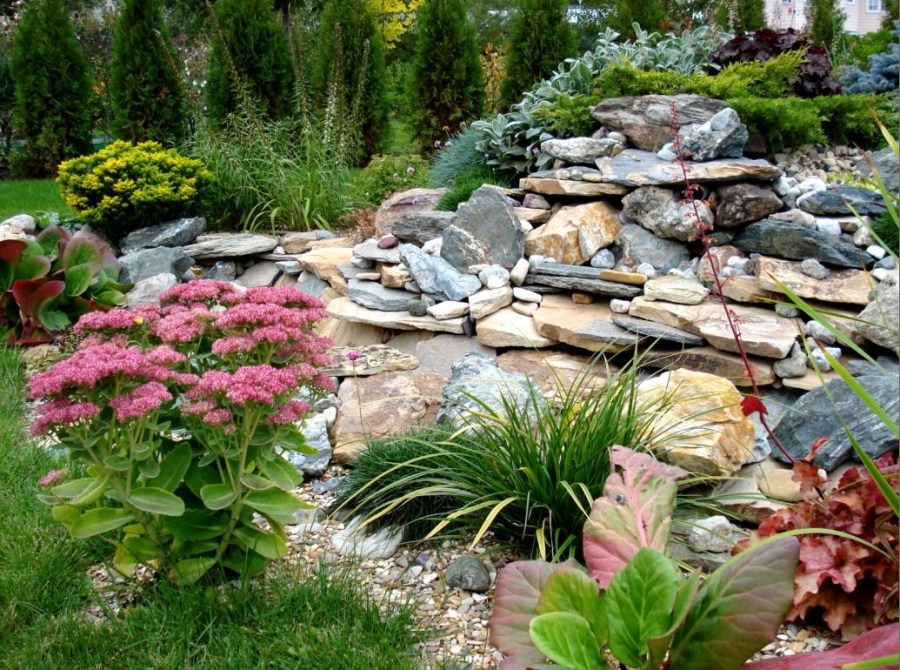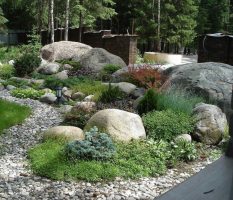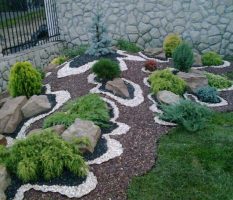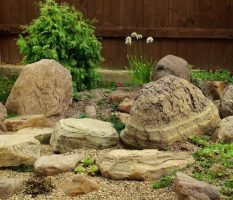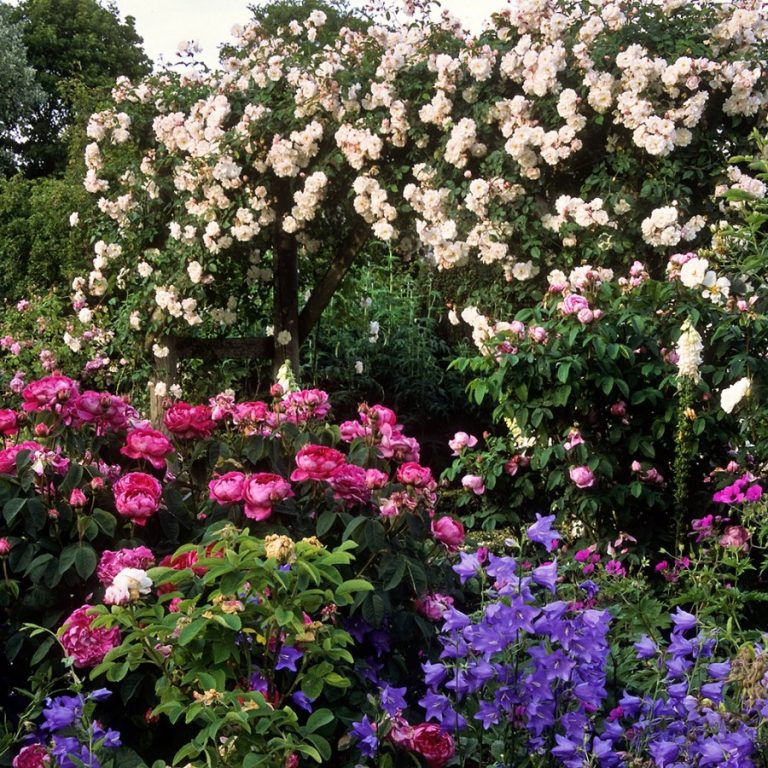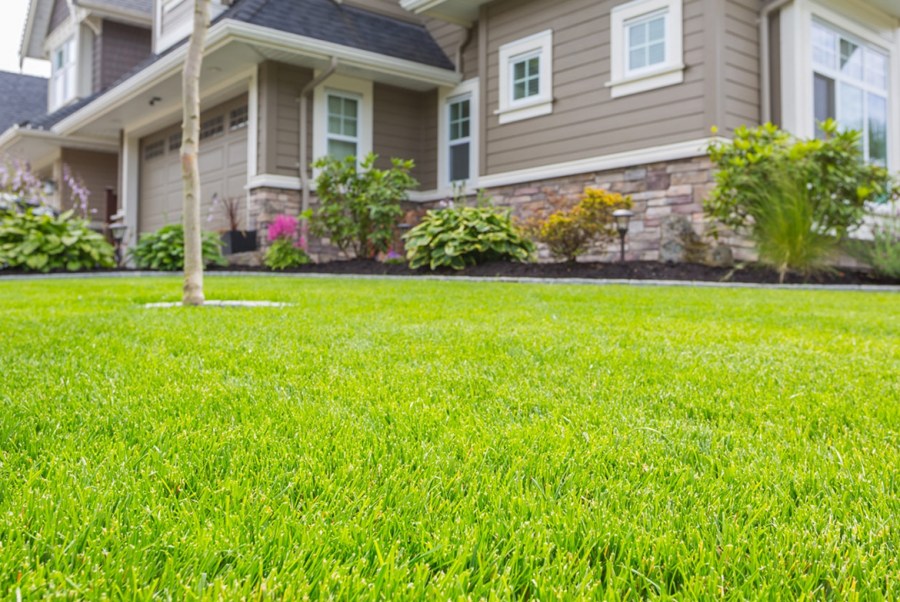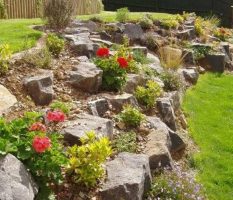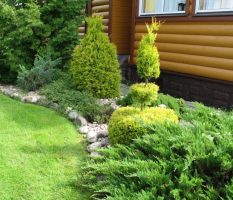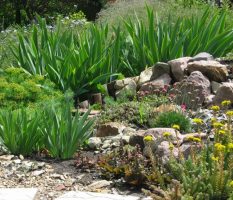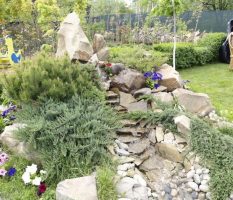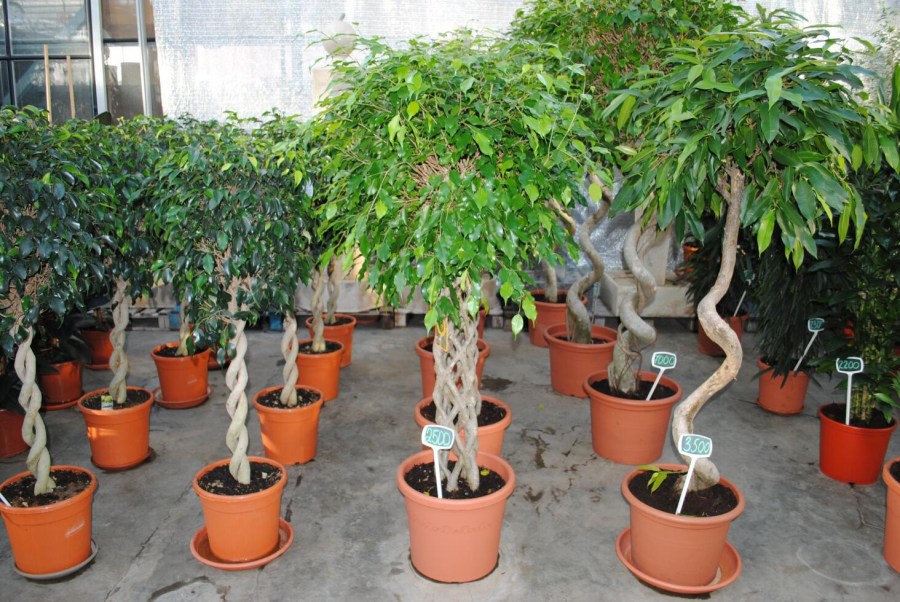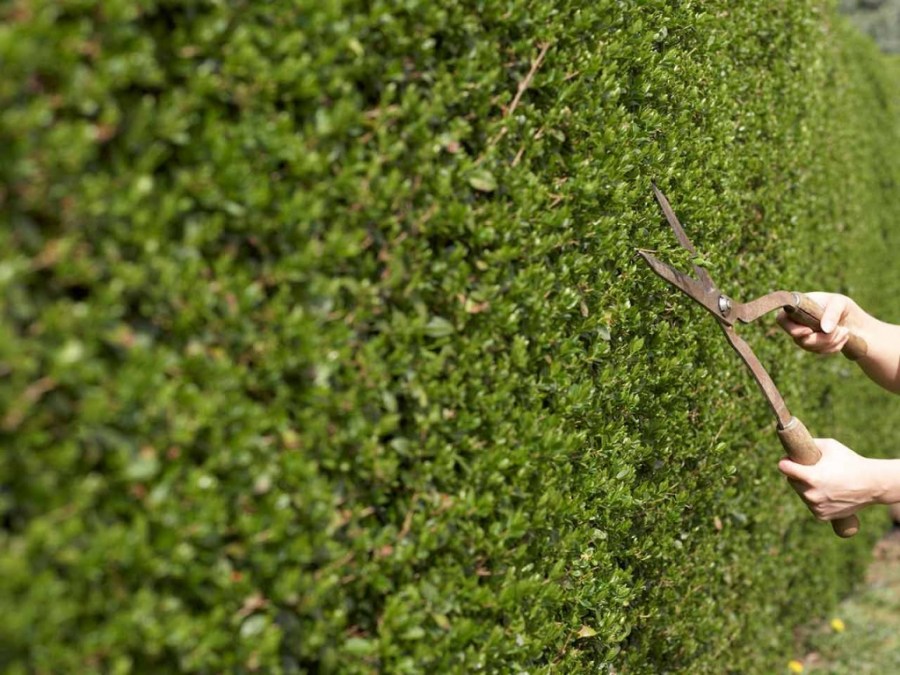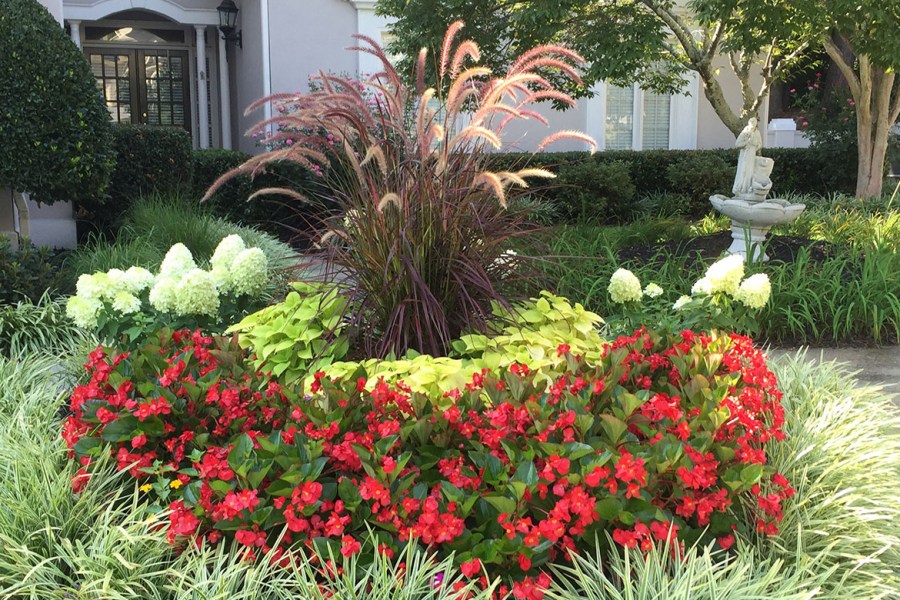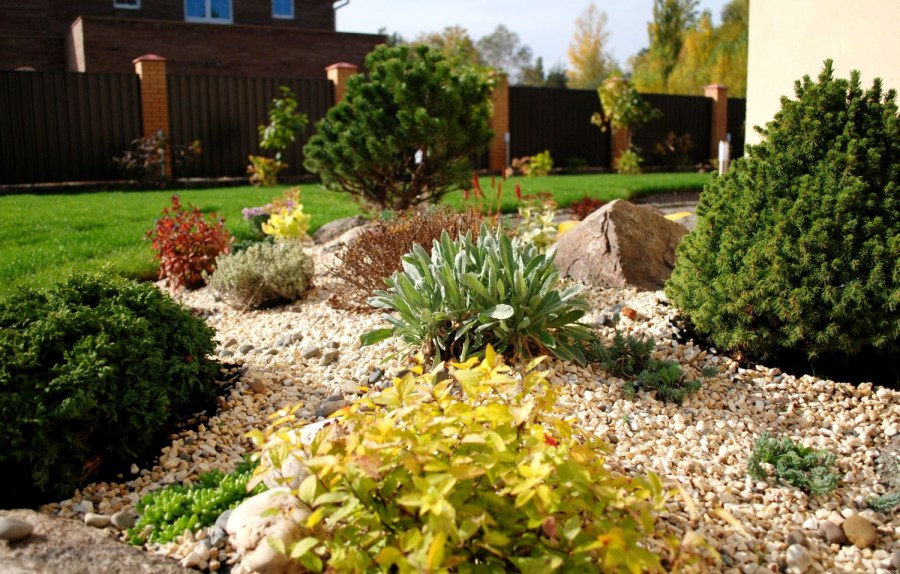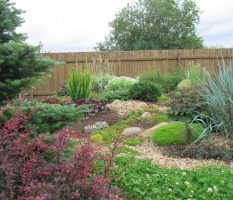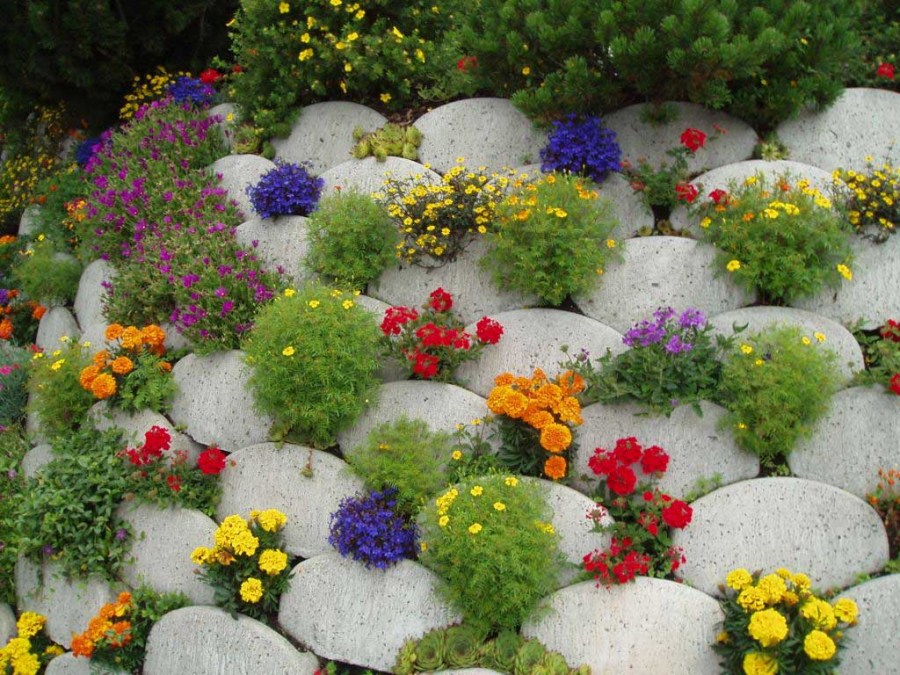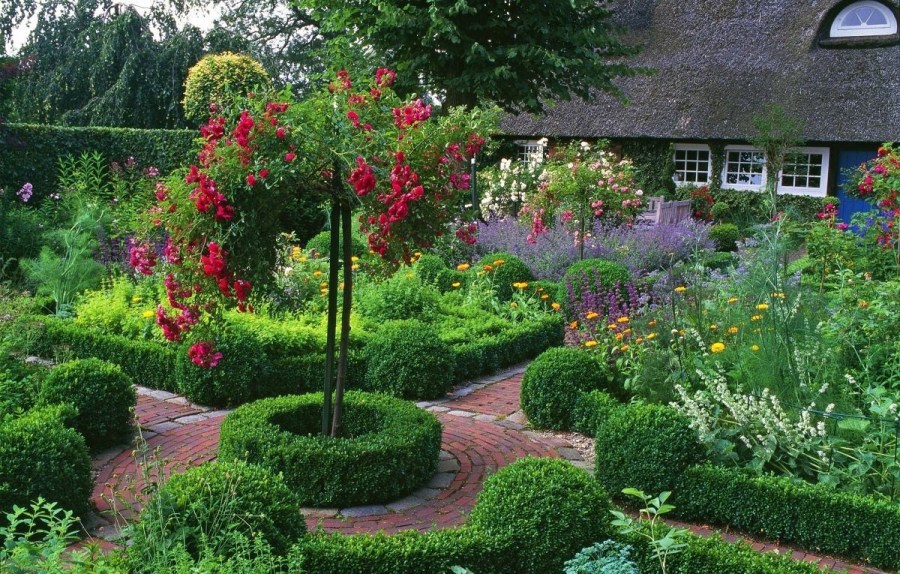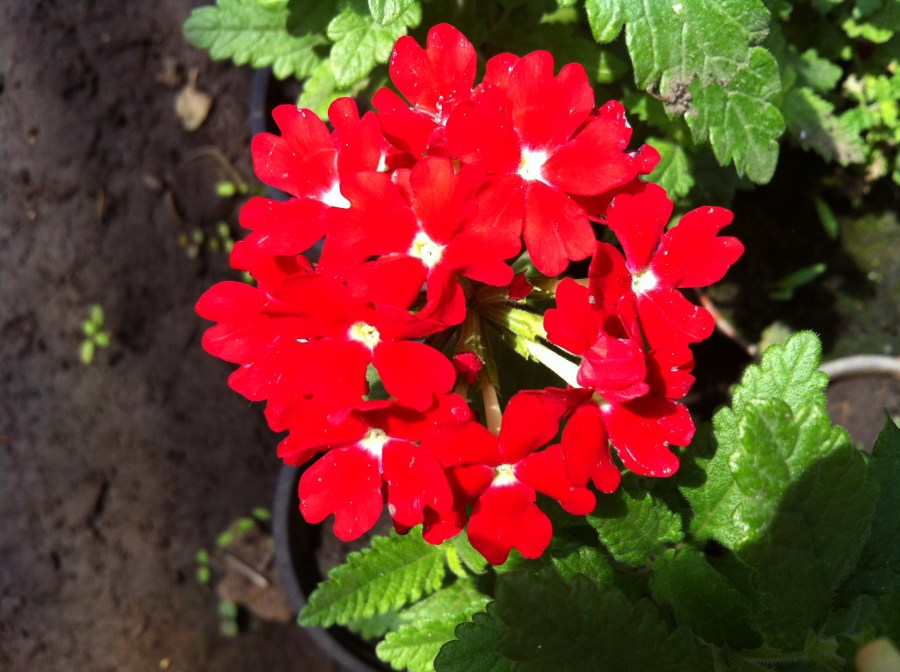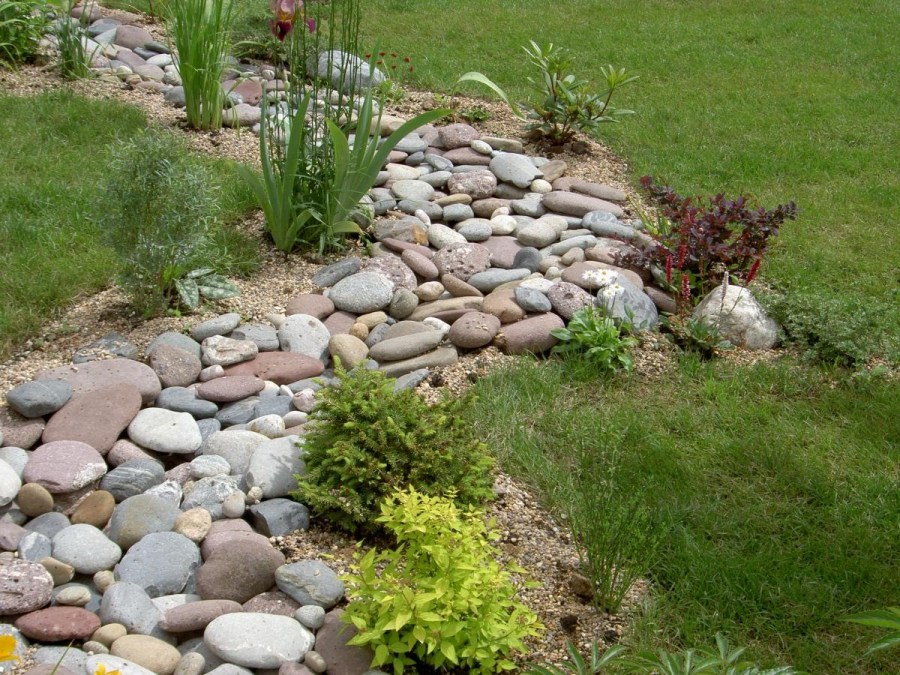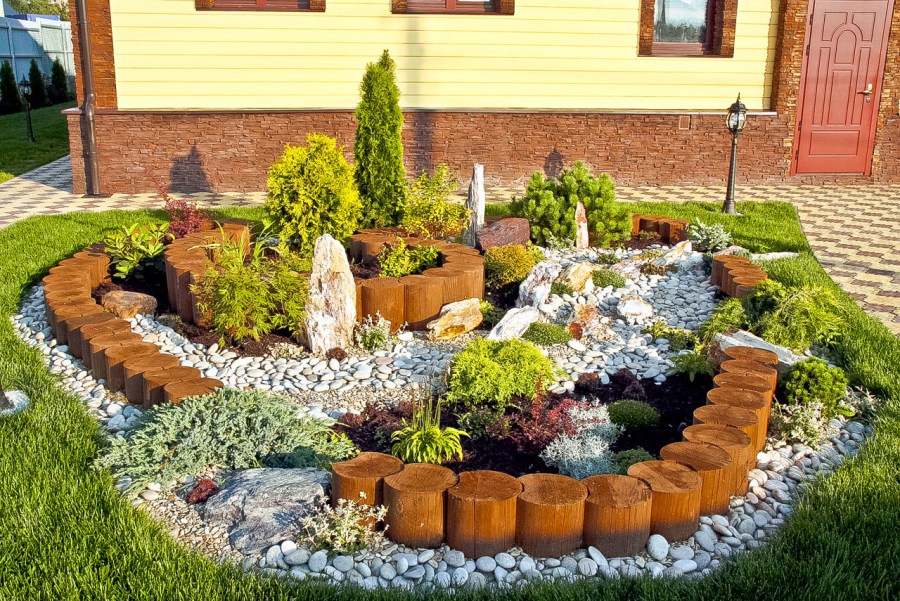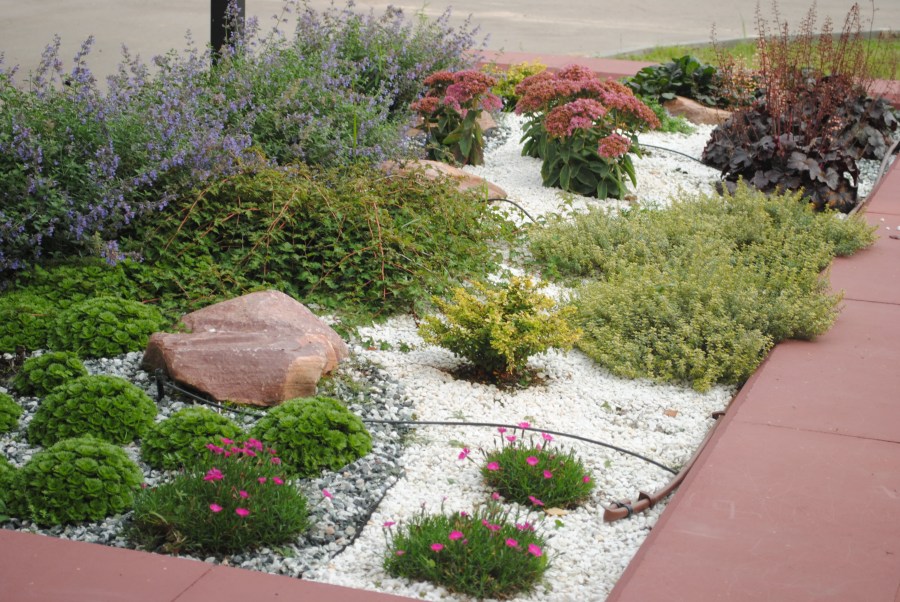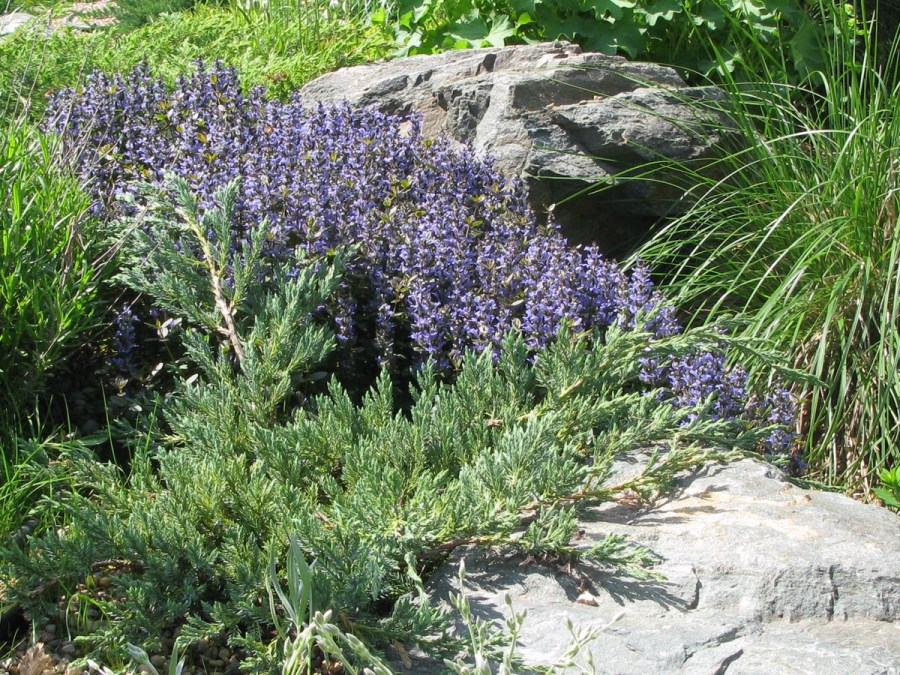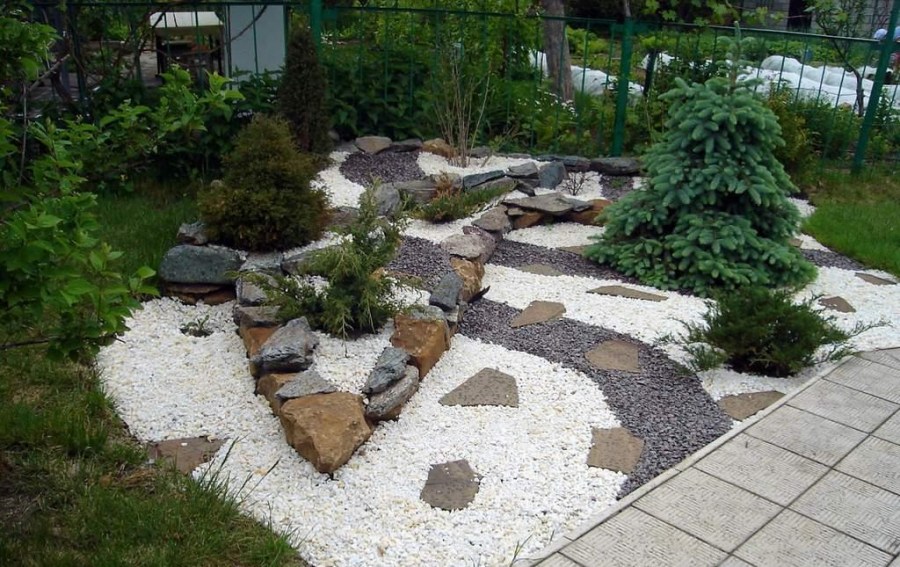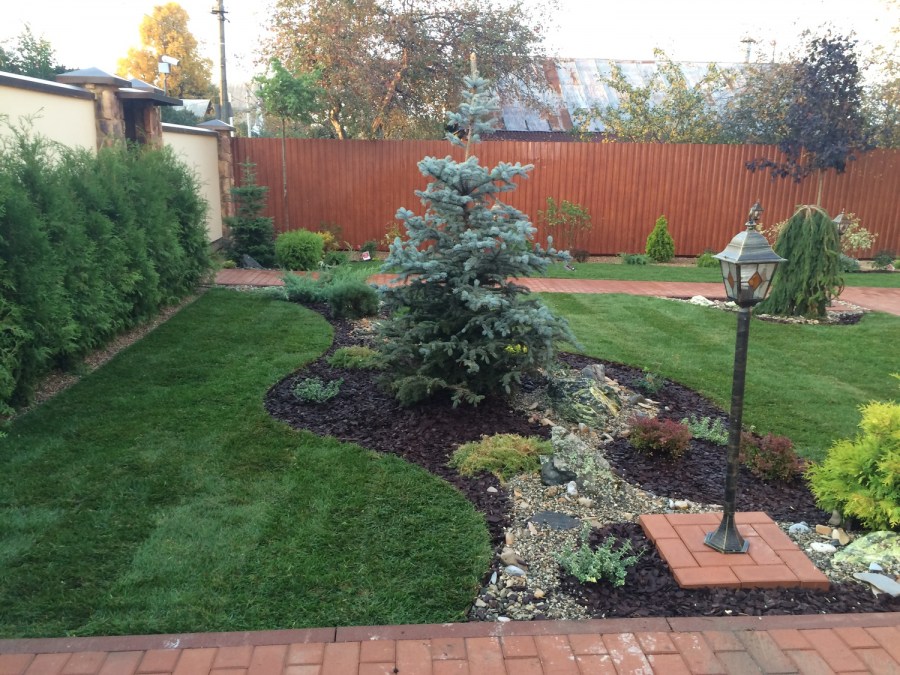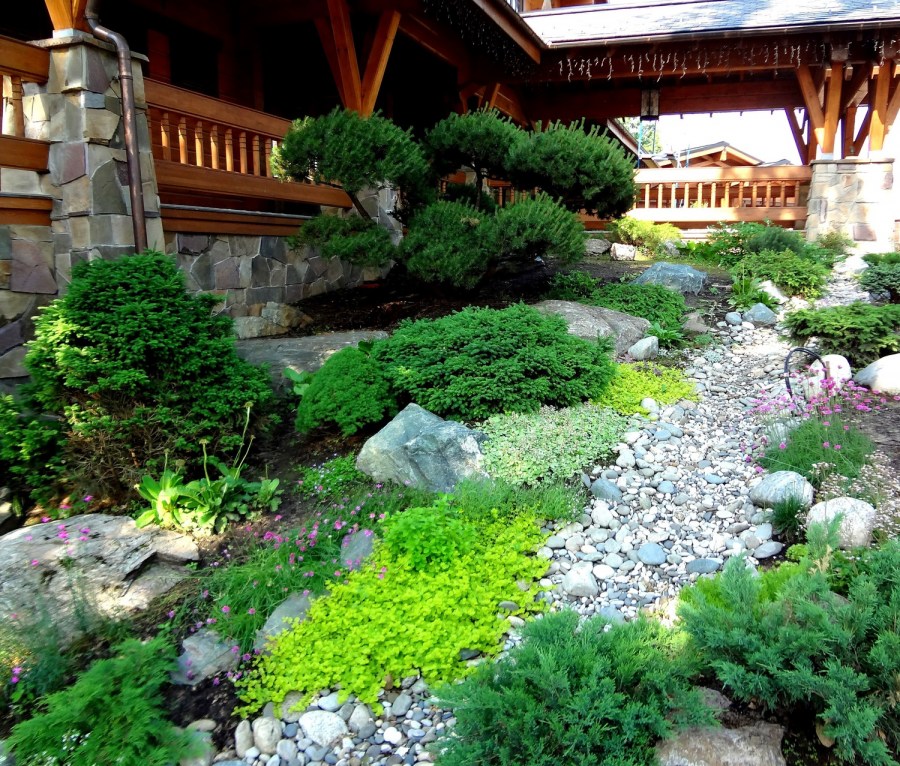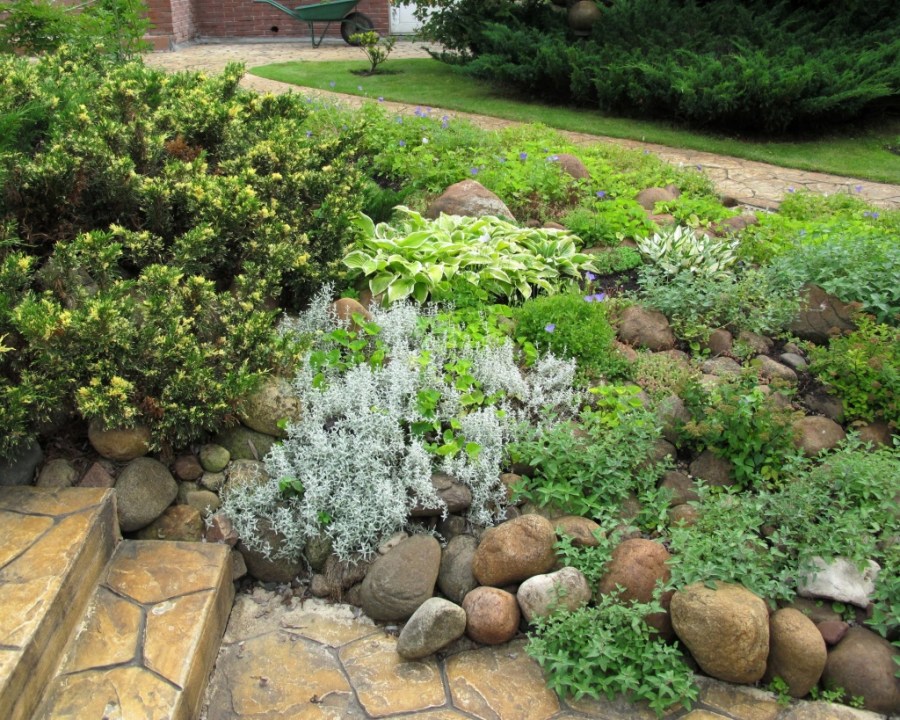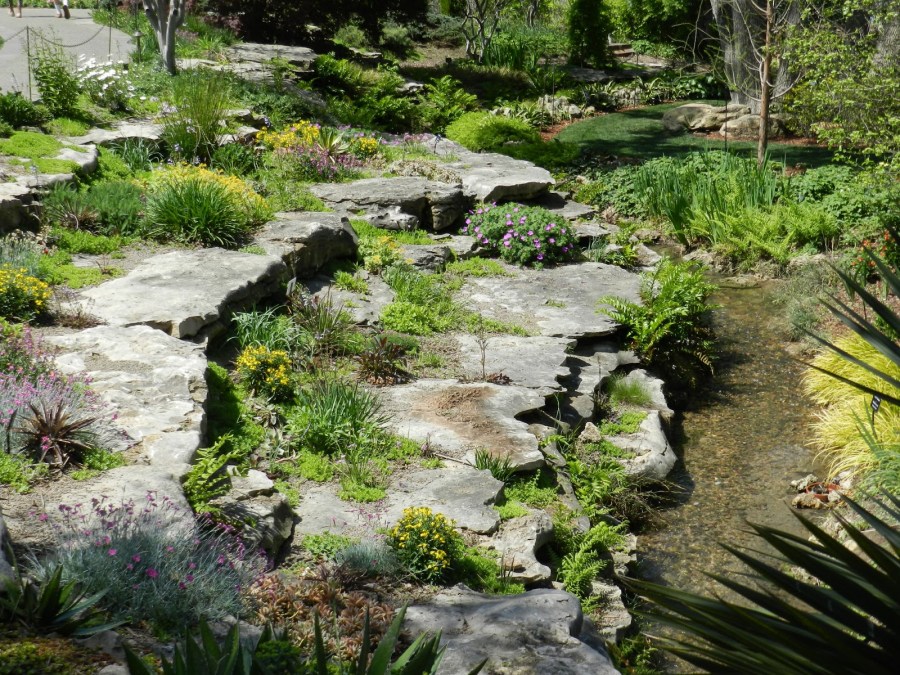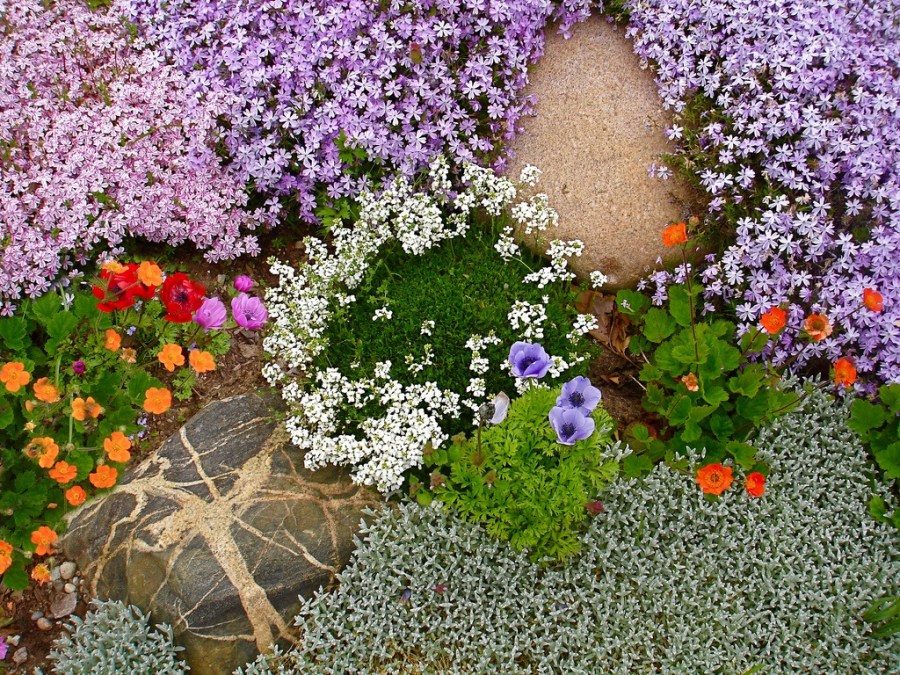Rockery - 140 photos of the main types of rocky gardens and tips for selecting elements
The arrangement of the stone garden is an ancient Japanese art that has developed and improved over many centuries. But what is rockery and what is its structure? We know that rockeries call a harmonious combination of different shapes, colors and sizes of stones decorated with ornamental plants.
In landscape design, rockeries look very impressive, stylishly decorate the garden, so their use is becoming increasingly popular.
Features of the rockery
- Various plants are used, deciduous, as well as conifers, but the use of ground cover plants is minimized.
- Often placed on a flat surface. The purpose of the rockery is an imitation of a mountain landscape.
- It does not have a longline structure.
- It will look spectacular both in sunny areas and in the shade.
- The beauty and tranquility of the stone composition is the main goal of the rockery, so they use a minimum of plants.
- Stones of various size, shape, color, texture are used.
Creating a rockery in the country
It is not difficult to make a rockery with your own hands, and caring for it is not difficult, therefore, such stone gardens are currently very popular. You can use almost any corner of your garden to create a rockery. Suitable terrain with small mounds and ravines, as well as flat areas.
The most daring design idea can be realized even on a small stretch of land. You can arrange artificial hills on a flat ground by pouring a hill of gravel or stones, and on the hills it is easy to arrange beautiful mountain landscapes.
There are many photos of rockeries, and stopping at one of the styles will not be difficult even for a novice gardener.
Construction will start right with the plan. First of all, draw on paper a diagram of the future rockery. Choose the types of ornamental plants that you plant there, place stones on the diagram, determine their size. So you can get around many mistakes.
When the scheme is ready, select a place for construction. Choose a flat or slightly hilly area with a circular view. In the future, survey paths can be laid around the rockery.
The rock garden on your site can serve as an independent element, or add harmony, successfully fitting into the style of an artificial pond or waterfall.
When the site is selected, you can begin to prepare the foundation. It is necessary to lay the drainage. To do this, remove the layer of turf, making a small depression in the ground.
Expanded clay, gravel, or simply broken brick into a fine fraction can be used as drainage. The drainage layer is about 10 cm. Tamp well and fill up with river sand of a large fraction.
For drainage, we fall asleep a layer of soil from a mixture of ordinary earth with humus. If you are afraid of weeds and want them not to bother you in the future, you can cover the ground with special geotextiles. The preparation is over.
How to choose the right stones
Correctly pick up and place stones on the site is an important moment. The basis of rockeries are stones. It will be right to choose durable, decorative stones while maintaining their naturalness.
We select several large stones for the base. When choosing, you need to carefully consider the natural features - a decorative chip, an unusual color or a bizarre shape. Naturally, stones of the same breed will look, but this is an optional condition - you design yourself.
Large foundation stones need to be placed on the site, dug in about a third, special attention should be paid to strengthening the stones in the ground, ramming the earth around to avoid the formation of voids.
Then get down to designing a rockery - place medium-sized stones around large ones, you can assemble them into groups, place them in tight groups or separately. Combine the placement of stones, then you can achieve the effect of naturalness.
The rocks that are most often taken to create rockeries are tuff, sandstone, limestone, slate, granite, limestone, porphyry.
But you need to remember that individual rocks can change their original presentable appearance under the influence of direct sunlight or heavy showers, in some rocks the pores on the stones can become clogged with dirt.
Some rockeries make without large blocks of stone, using only a small bed of colored rocks.
How to choose the right plants
The preparatory work is behind and now you can start decorating the rockery with plants. Plants for your rockery can be selected according to its style, or guided by a design idea. When choosing plants, it is important to remember that rockery is a rock garden, and plants only give it life and decorativeness.
First you need to plant dwarf conifers, remembering their size in adulthood. You can take a mountain pine, namely its pillow-shaped or dwarf species, or the same species of ordinary spruce.
Some types of junipers are also suitable for this purpose. You can use the Chinese juniper, as well as the Cossack or horizontal type of juniper. If you prefer thuja, then you will suit spherical or dwarf species.
At the second stage, we make a selection and plant shrubs in the ground. Choose undersized or creeping shapes. Bushes of boxwood, cinquefoil, Japanese henomeles, some types of cotoneaster, Japanese spirea, dwarf creeping willow, alpine rhododendrons are suitable.
Perennials are also used in the design. You can plant astilbe, Iberis, elecampane, wild onion, cereals, hosts, cuff, different types of grits. If you use ferns, then place that part of the rockery where there is a lot of shade, remembering that it is a shade-loving plant.
Ground cover herbs and flowers can be used to create beautiful plant pillows between stones. The Caucasian rezha, stonecrops, Veronica filiform, cat's paw, awl-shaped phlox, stalk are beautifully braided by stones.

Some of these plants grow rapidly, which can lead to the fact that they completely cover the stones, so you need to monitor and cut them in time.
The undoubted decoration of any flower garden is spring bulbous plants, for example, crocuses, stunted tulips, muscari. But their flowering period is short-lived, and gardeners try to close the remaining leaves with other plants, in particular annuals.
After planting the plants, bring the appearance to its final completion. To do this, pour empty spaces between the stones with decorative colored chips. The construction of the rockery is completed.
Common mistakes in building rockeries
- Do not place a rockery near the wall of the house or along high solid fences, this will reduce the natural effect.
- To enhance naturalness, you can make a hedge in the background.
- Do not place tall trees or shrubs near the rockery - the emphasis of the composition may change.
- Do not plant plants with bright foliage and flowers. A colorful rockery will distract the viewer from the peaceful tranquility of the stone garden.
- When choosing plants, do not forget about the flowering time of each species, so that your flower garden looks alive all year.
- When arranging stones, view the composition from different angles. So you will avoid mistakes of accumulation of stones in one place or vice versa, their strong fragmentation.
- Do not get carried away by the symmetry and severity of the arrangement of stones. Imagine how these stones would be located in nature.
Adhere to maximum naturalness, and your rockery will become a wonderful corner of wildlife in your garden!
Photo rockery
Hot smoked smokehouse: features, drawings, sizes, instructions (90 photos)
Private house from SIP (SIP) panels - an overview of all the advantages + 150 photos
Aquilegia: plant species, planting and care rules, reproduction + 105 photos of flowers
Cast iron stoves (110 photos) - an overview of models for a private house and garden
Join the discussion:

